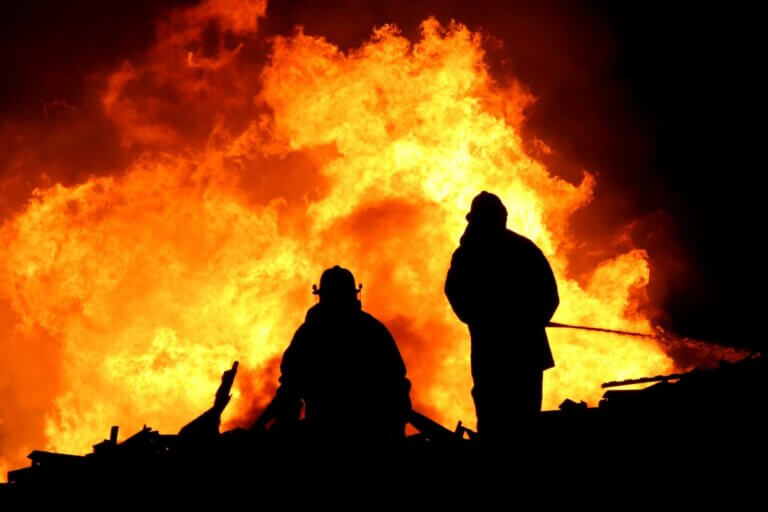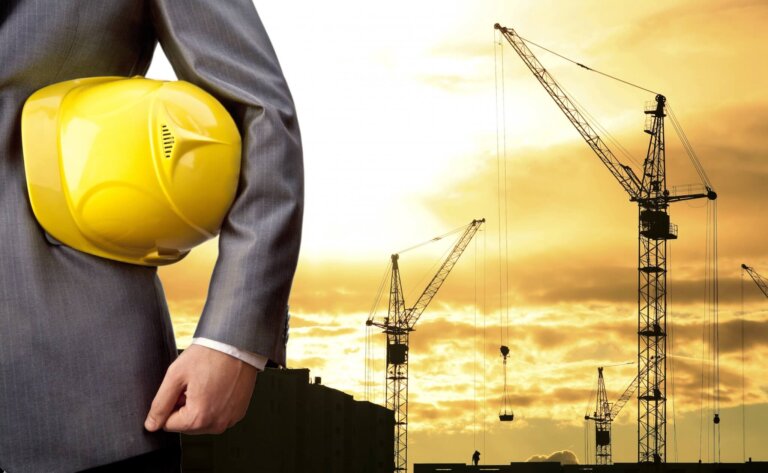An earthquake of greater or lesser magnitude can happen at any time, especially in a highly seismic country like Chile. Therefore, it is necessary for each company to have and apply action and evacuation plans that are clearly known to all workers.
The key to work and business success lies in being prepared to face any scenario, including contingencies, crises and, of course, catastrophes or natural disasters. This condition acquires special importance in Chile, defined by experts as one of the most seismic countries in the world, as it is located on a subduction zone of great telluric activity.
In fact, statistics show that approximately every ten years, some point in our geography suffers the consequences of an earthquake with a magnitude greater than 7.5 degrees on the Richter scale. Not counting the large number of smaller earthquakes that occur on a regular basis.
Therefore, it is essential to be prepared to face this type of contingency safely, especially inside offices, companies, industries, deposits or productive areas. This, because the presence of machinery, warehouses or equipment of different conditions tends to exponentially increase the risk of suffering injuries or accidents.
A strategy for every need
The first step to develop an effective strategy for prevention and reaction to earthquakes is to carry out a detailed technical study of the respective reality of each workplace. Whether this is a company, office, industry or productive site.
This investigation will make it possible to accurately determine the plans and procedures to be followed in this type of contingency. Similarly, each of them must include a detailed manual indicating what must be done before, during and after the earthquake.
In this regard, the experts of the Chilean Security Association, ACHS, provide the following basic recommendations to act in an event of these characteristics. Based on these suggestions, companies can develop their respective Emergency Plan, adapting it to the physical or geographical characteristics of each workplace.
General recommendations
- First of all, we must inspect and classify the types of construction where the work tasks or activities are carried out, in relation to their structural quality and inherent risks.
- Depending on the activities and functions carried out inside or outside the enclosure, the respective security zones must be determined.
- These should preferably be located next to pillars, under door lintels and near chains or other areas of high structural resistance. At the same time, they should be kept away from windows, partitions or other elements that could come off or fall on people.
- The safety zones must always be properly marked, and the staff in charge must ensure that this signage is clearly visible to everyone.
- It must be precisely defined which situations will make it necessary to evacuate workplaces. For example, high intensity seismic movements or those that prevent standing. This will depend on each company in particular, although it is advisable to follow the parameters established by the National Emergency Office, ONEMI.
- In the case of high-rise buildings, we must establish safety zones for each floor, which offer more protection than the workplace itself. The access roads to these areas must also be duly signposted.
- In the case of low-rise buildings, it is also necessary to determine external safety zones duly marked. In buildings with two or more floors, these must be located at least 25 meters apart. If the building is only one story, this distance is reduced to 15 meters.
- The external safety zones must be far from vehicle traffic routes, electrical installations, cables and other elements that could fall on people.
- All evacuation routes to external security zones must have visible signage and be in good condition.
- The evacuation plans must be known by all workers and regular users of the premises. But they must also be placed in visible places for all external public accessing the premises. These printed plans also must indicate the safety zones and the evacuation routes to reach them.
- It is necessary to correct and/or eliminate all the conditions that can generate accidents or cause injuries to people during the earthquake, especially in the safety zones and evacuation/circulation routes. For example, unnecessary furniture and ornaments, fluorescent tubes, lamps, storage of heavy objects, glass, skylights, electrical cables, cornices, partitions and weak walls, among other elements.
- Determine the communications and/or signal systems that will be used in the event of a facility collapse; as well as the personnel that will act as emergency brigades; and the actions to be carried out in the event of a power, gas and/or water supply cut. It is also necessary to implement an emergency lighting and life support system.
- It is essential to carry out periodic practices and drills to apply the respective evacuation plan.
- It is advisable to designate leaders or evacuation managers who are in charge of groups of workers, to guide them to safety zones. It is necessary to constantly train these leaders, so that they know how to act in emergencies, as well as provide them with equipment and badges for their identification.
- If the company, office, industry or extractive-productive activity is located in coastal areas, it is essential to bear in mind the risk of a Tsunami (or risk of flooding due to giant waves hitting the coast).
- Safety zones should be selected in high places (hills or roofs of tall and structurally very solid buildings), where all workers can be evacuated when there is a probability of a Tsunami. In the same way, it is necessary to determine the appropriate transit routes to quickly reach those places at height.
- The most accurate way to recognize Tsunami risk is to determine if the earthquake is strong enough that people cannot stand on their own feet.
- It is also important for companies to coordinate with local authorities, to ensure better dissemination of their security plans.
- It is necessary to dismiss as safety zones and evacuation routes all those that are exposed to the risk of boulders and/or avalanches coming from hills, dams, extractive works or earthworks.
How to act during an earthquake
- During the emergency it is necessary to remain calm and go to the pre-established safety zones, avoiding running and/or shouting, to prevent situations of individual and/or collective panic.
- Emergency doors and exits must open and remain open throughout the emergency.
- Previously it is necessary to disconnect all electrical machines or equipment, cut off gas supplies, and turn off any other source of energy for materials or tools.
- During the evacuation, the leader or person in charge must show a firm and safe attitude, controlling the behavior of the group, and giving simple and precise instructions.
- Faced with the possibility of a Tsunami, workers must evacuate to pre-established safety zones, withdrawing from low-lying coastal areas and using planned transit routes.
How to act post-earthquake
- Once the seismic emergency is over, evacuation leaders or managers must determine if it is necessary to leave the building to external safety zones. This step must be done after inspecting workplaces and assessing their conditions.
- The leader or person in charge of the evacuation of each area must ensure that all the workers under their charge are in the pre-established safety zone. If necessary, must provide first aid care to those who are injured and determine the respective transfers to care centers.
- The personnel designated to act as emergency brigades will proceed to review the company premises, both in their structural aspects and facilities, to ensure that there are no fires, water leaks, filtration of flammable substances or deterioration of electrical conductors, walls, floors and stairs. If there are workers trapped in any dependency, notify the local emergency services immediately.
- Likewise, the degree of damage and risk of the different places or constructions must be classified, to determine if the activities are suspended or restarted totally or partially.
- If no damage to electricity, water or gas services is observed, they should be gradually replaced to prevent leaks and/or accidents.
- If damage of a certain magnitude is found, we should request external technical advice from competent personnel (water, electricity, gas or sewage services, as appropriate).
Download the DataScope app and start now!
DataScope is the ideal tool to eliminate paper use, save time, and efficiently collect data from the field. It allows companies to streamline, organize and evaluate field work thanks to its online forms, which provide indicators in real time, 100% adaptable to any area.
With DataScope, your team can answer custom mobile forms from their phones or tablets, online or offline, through the app.







